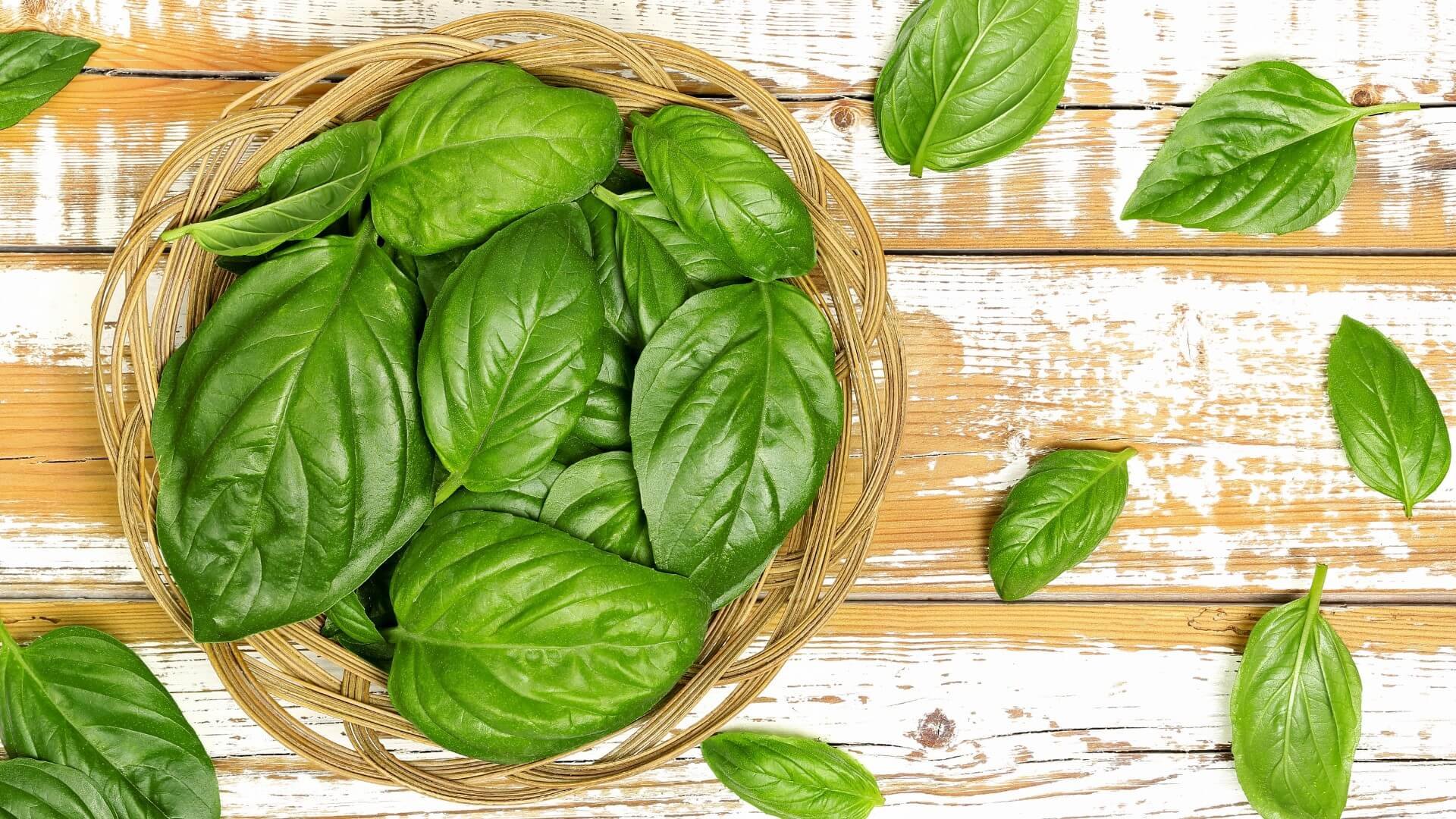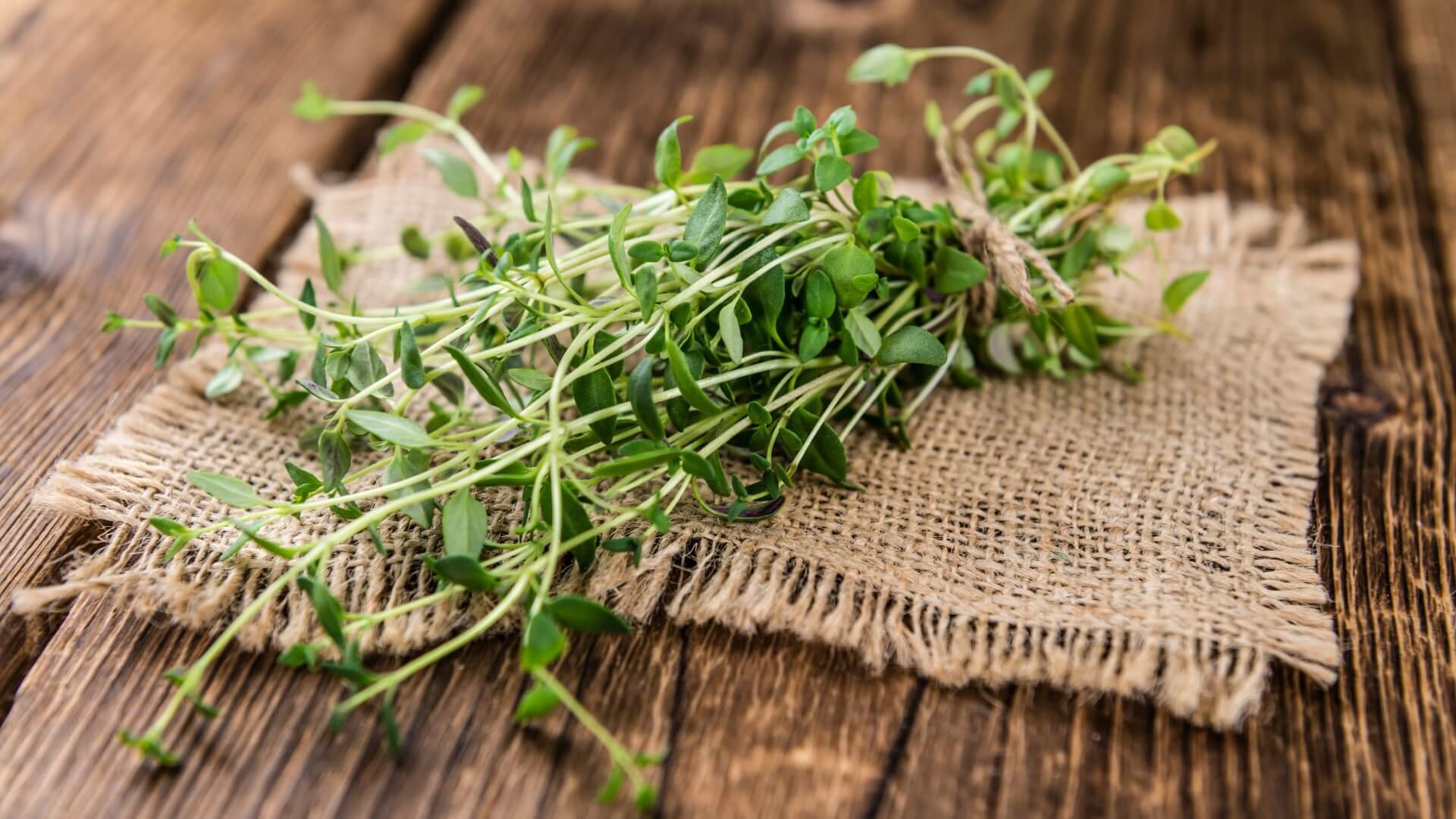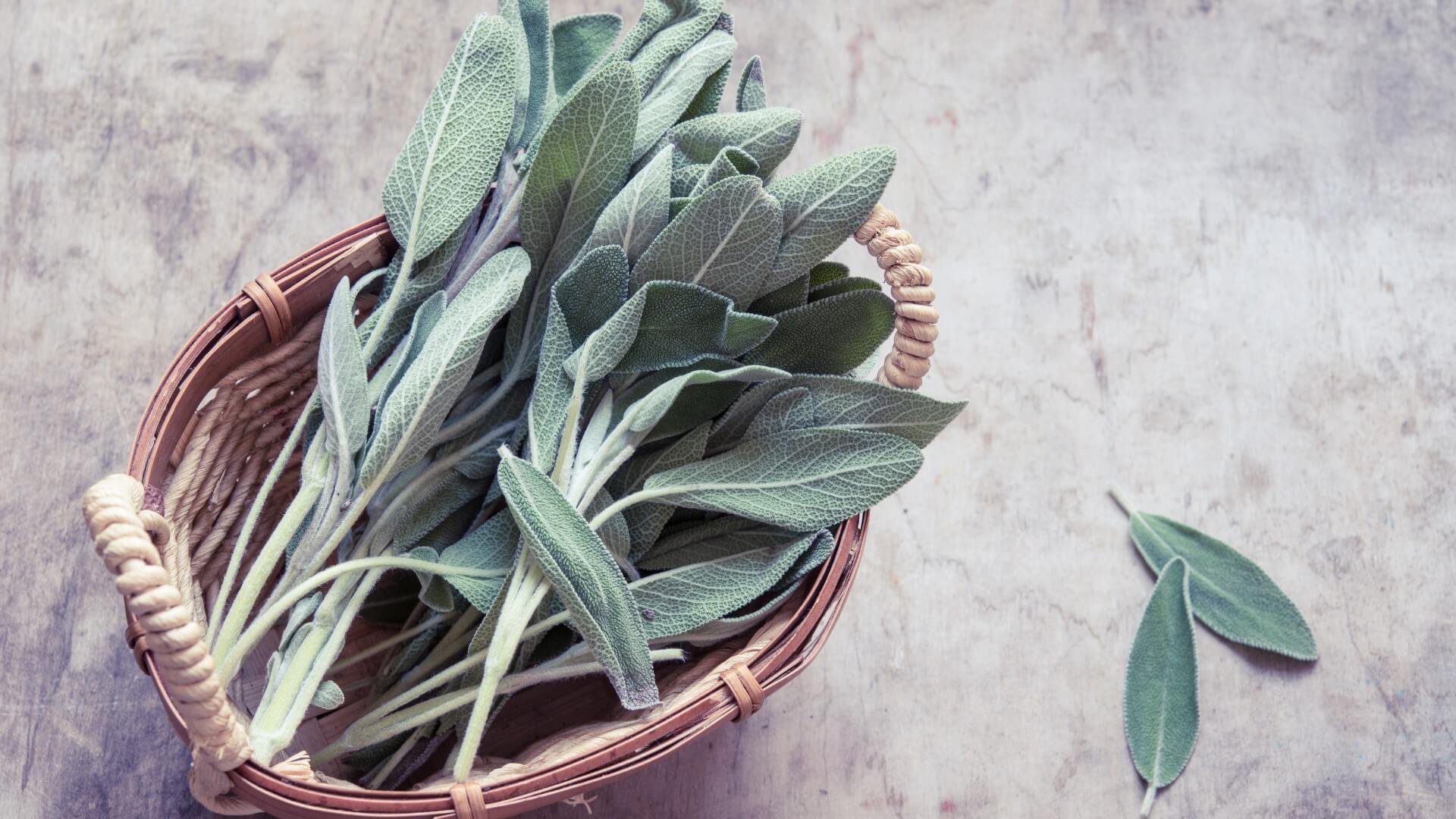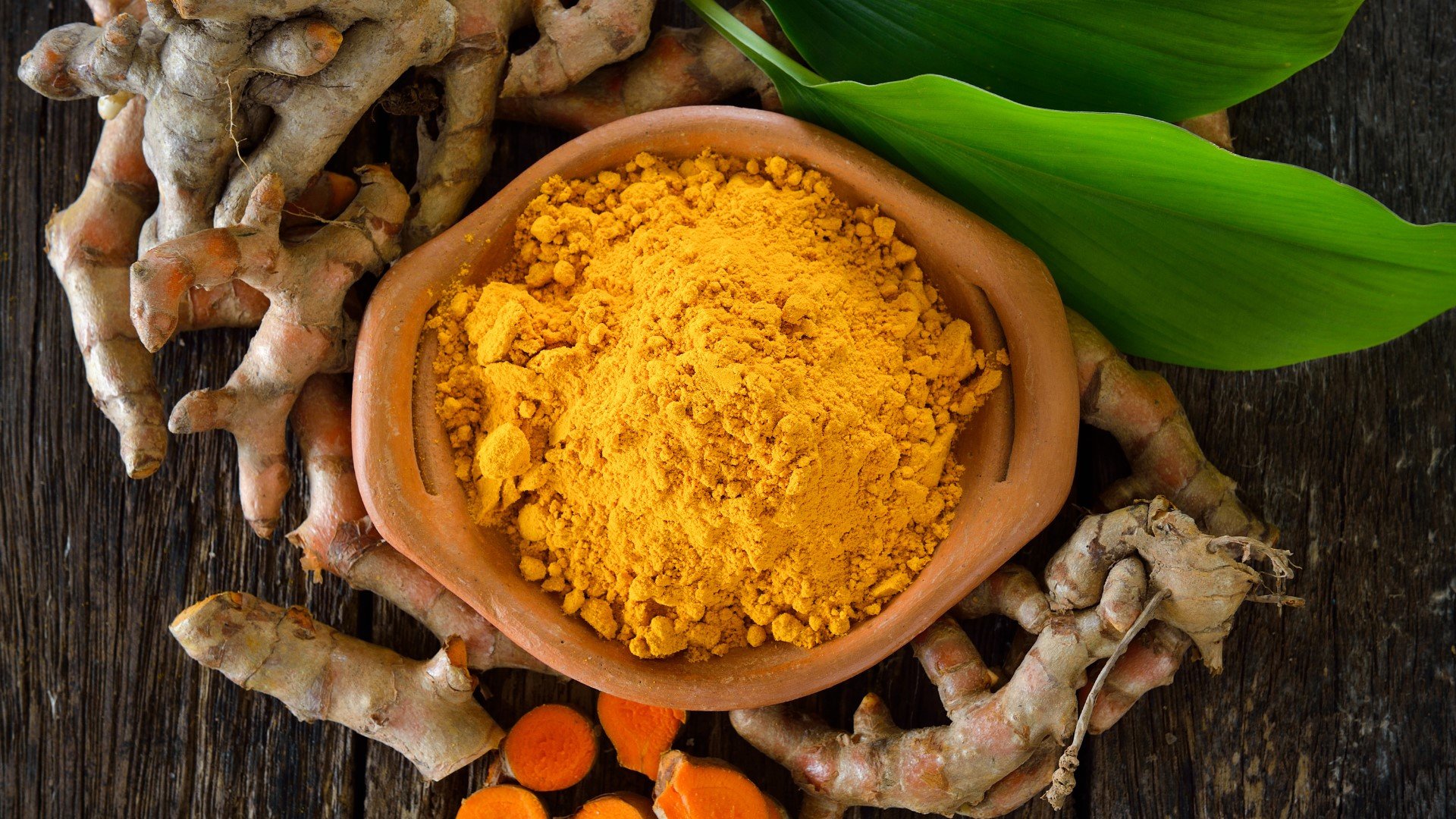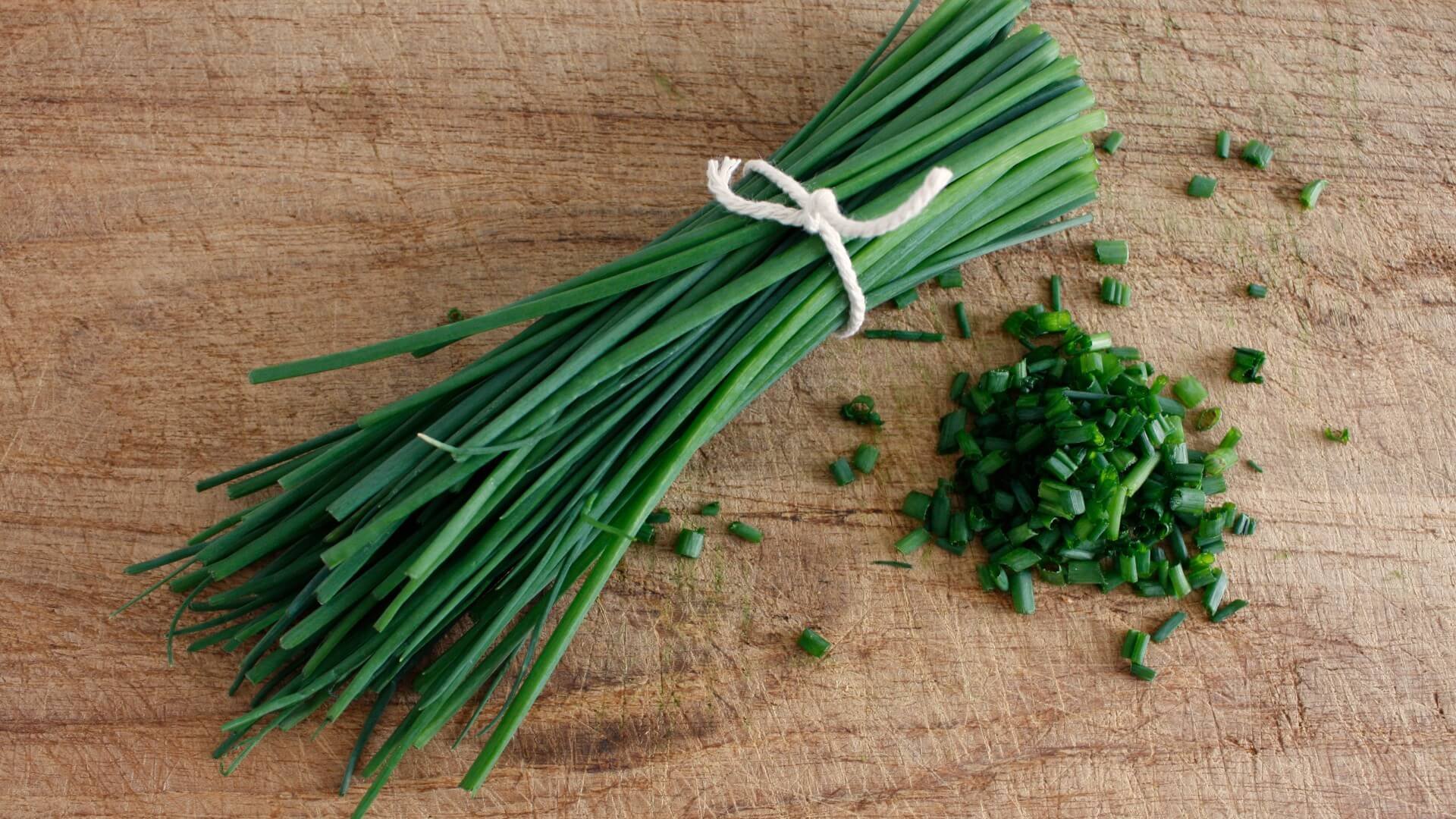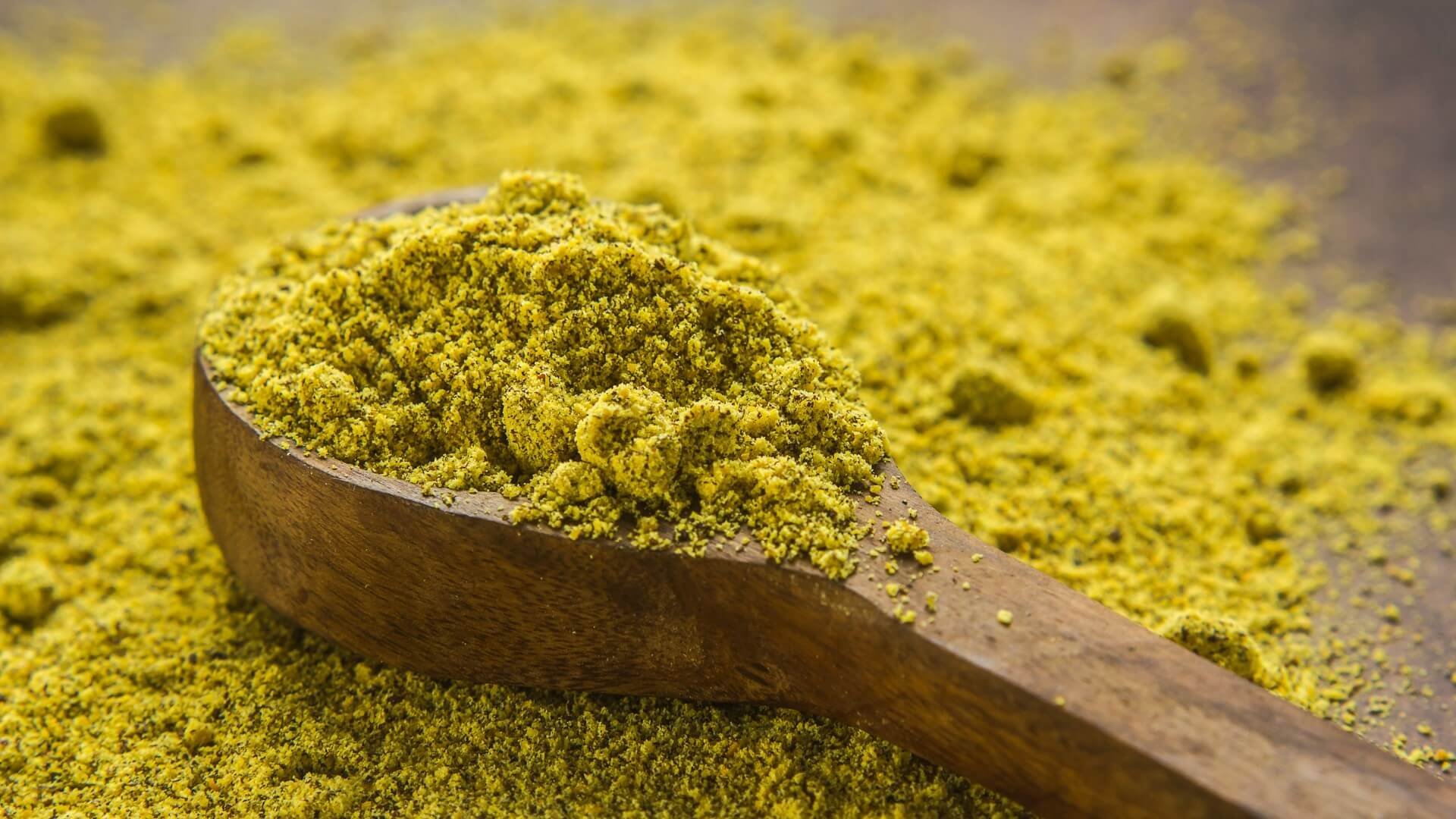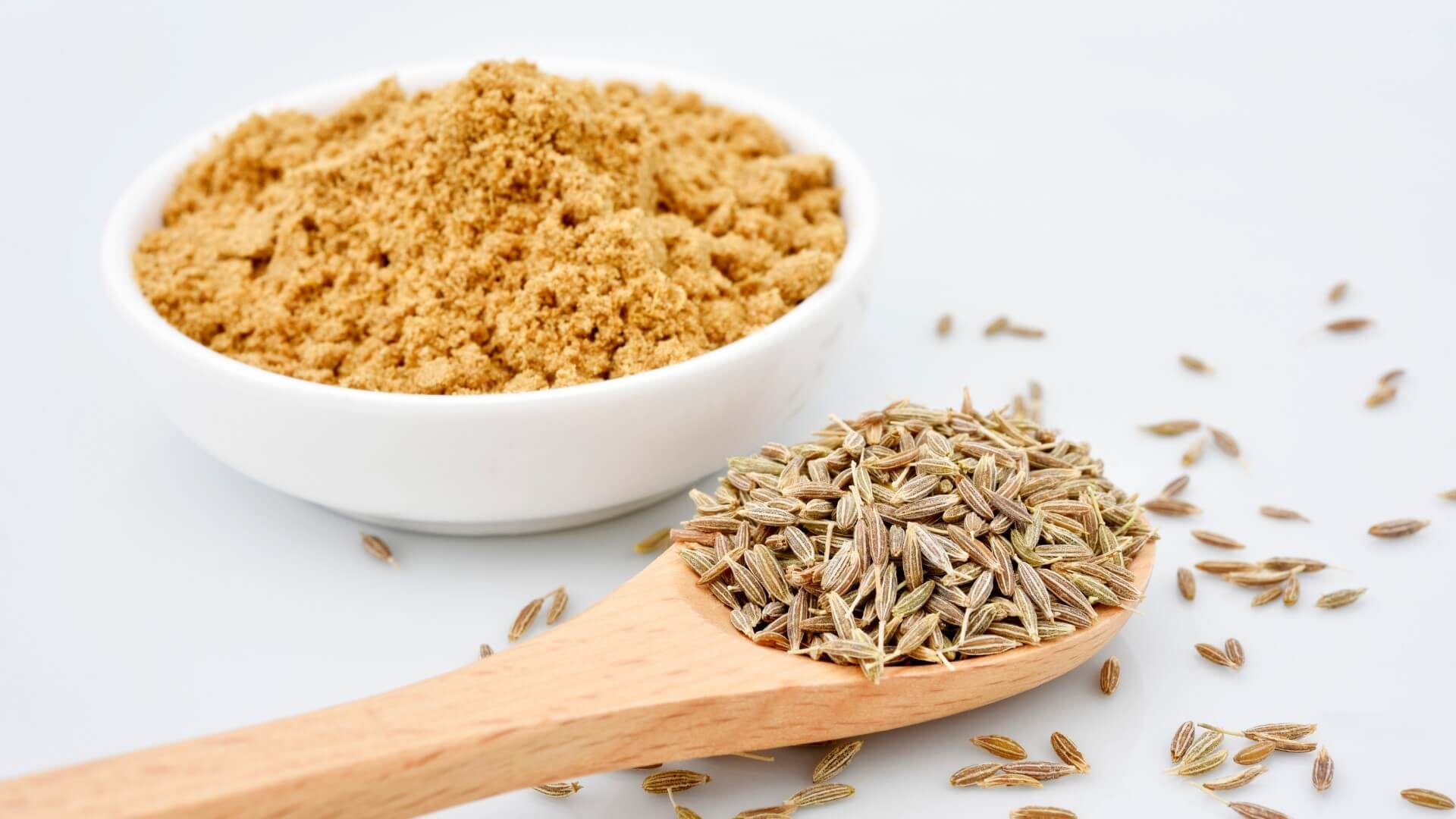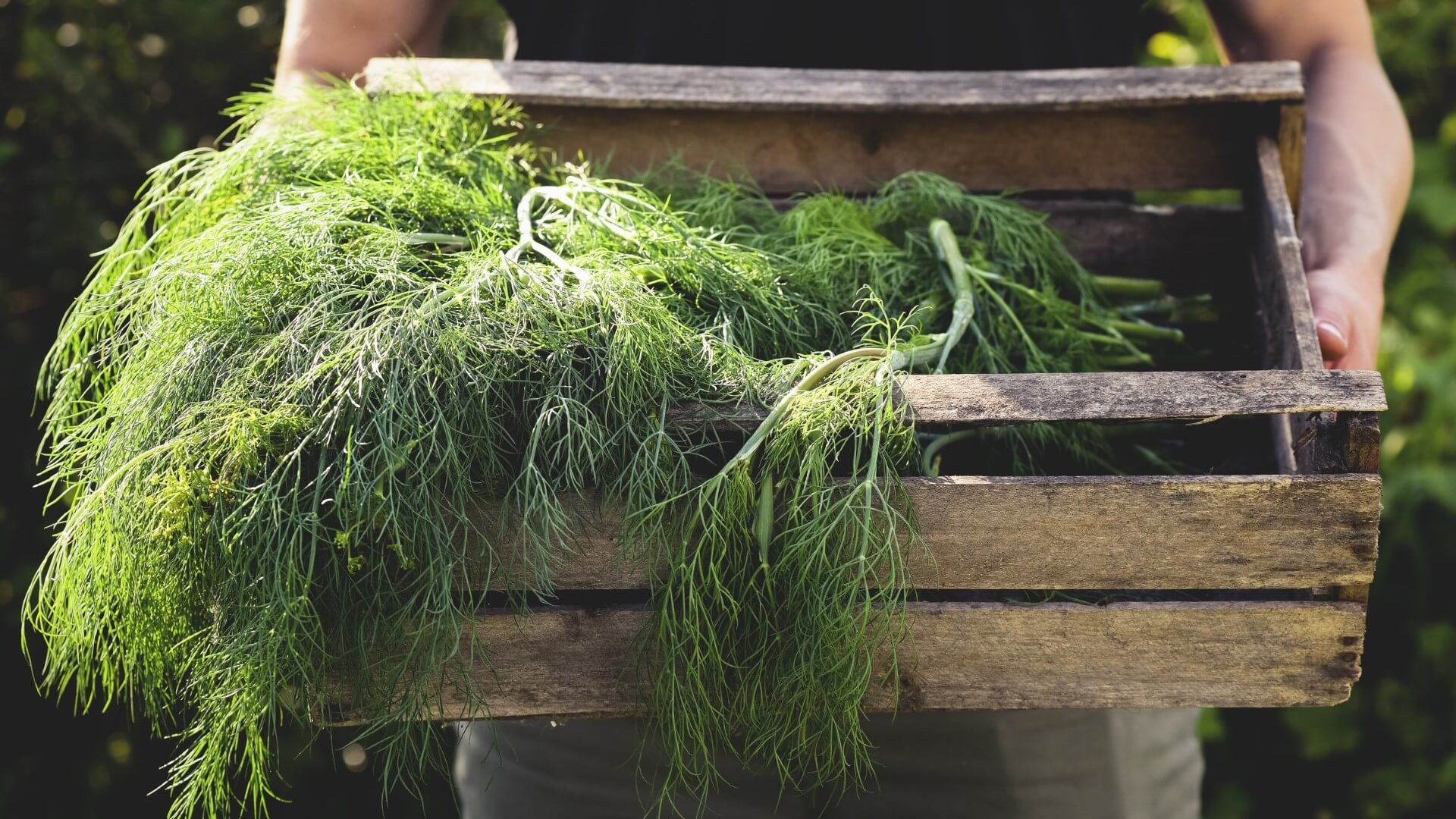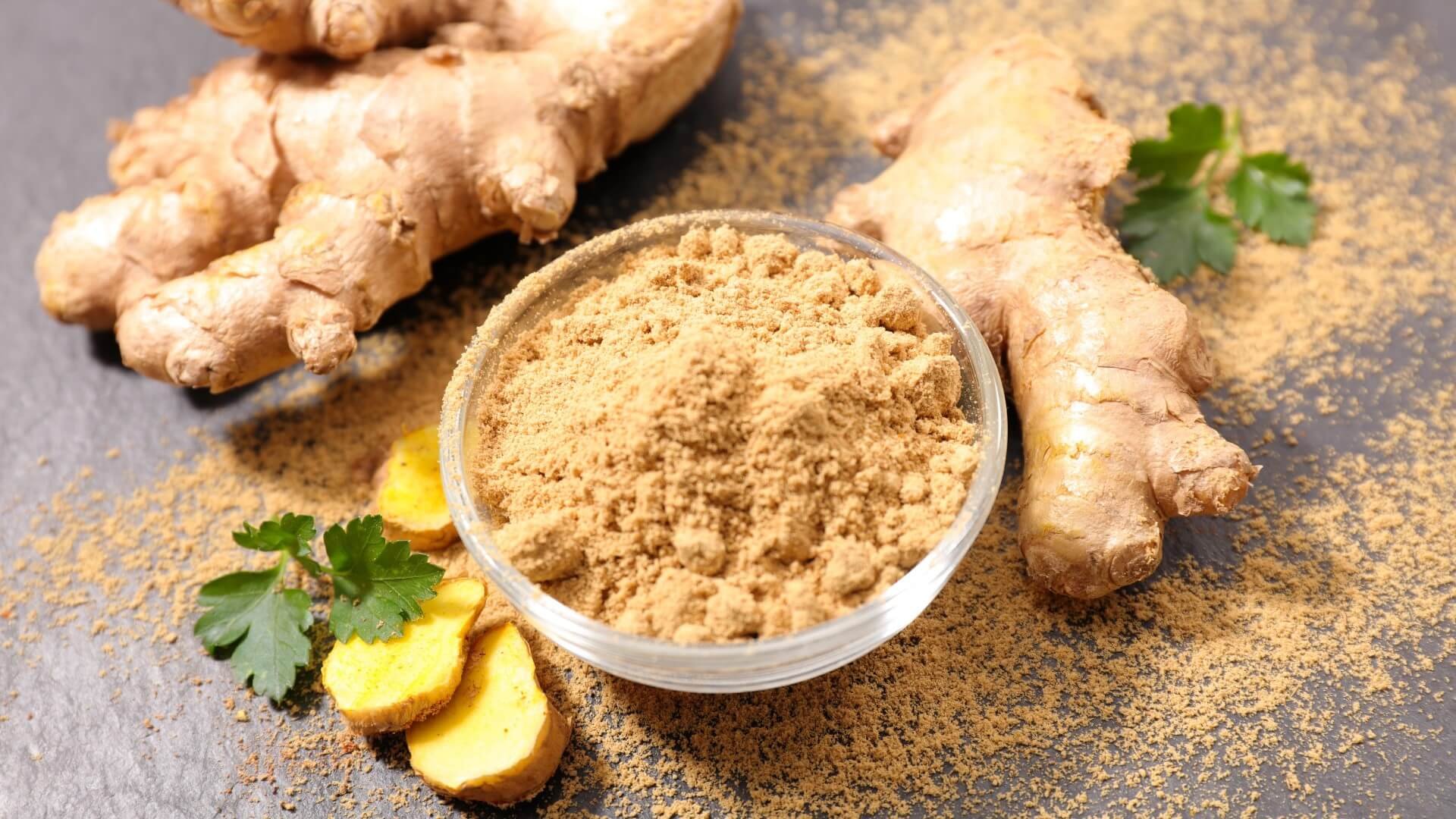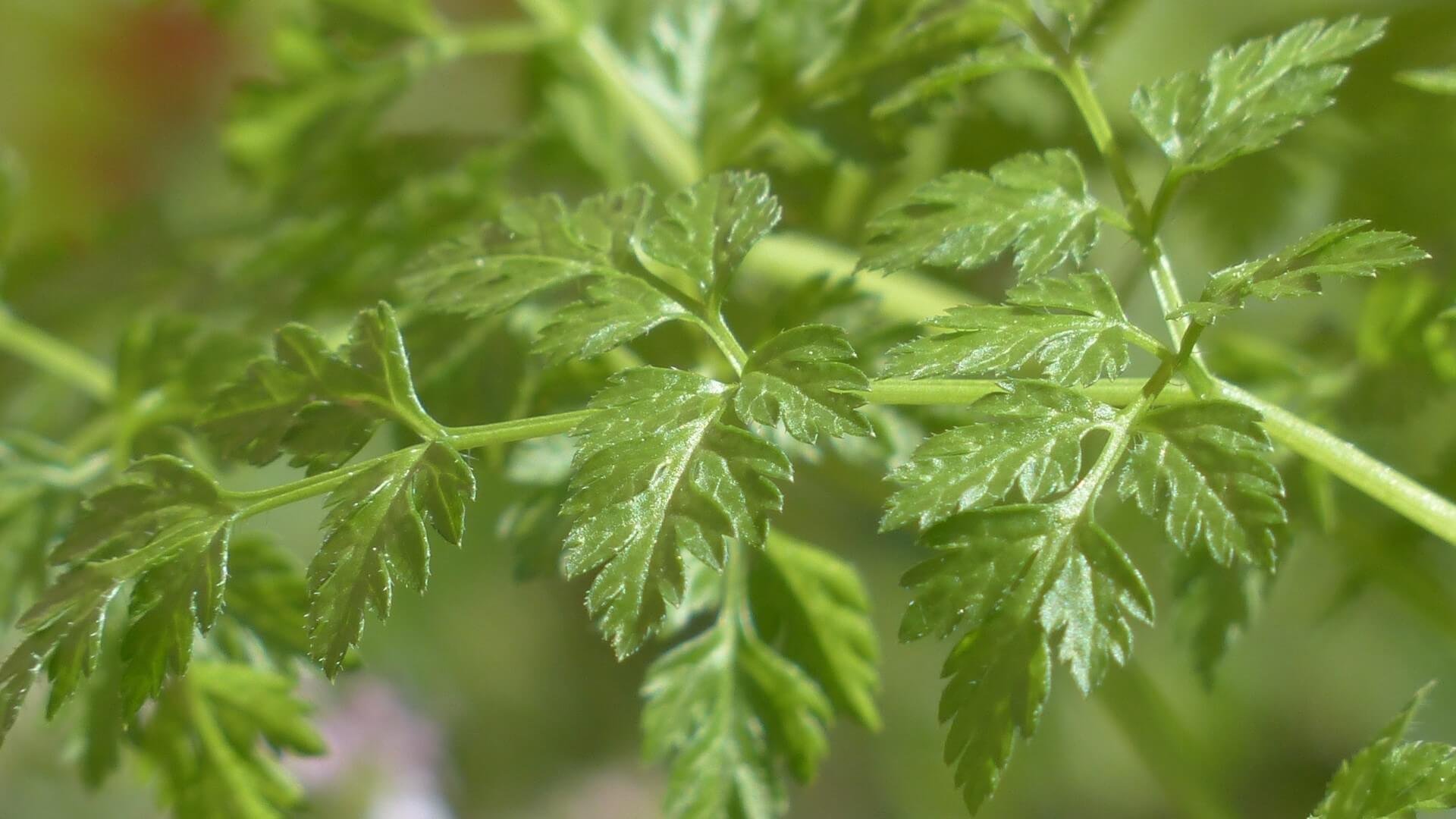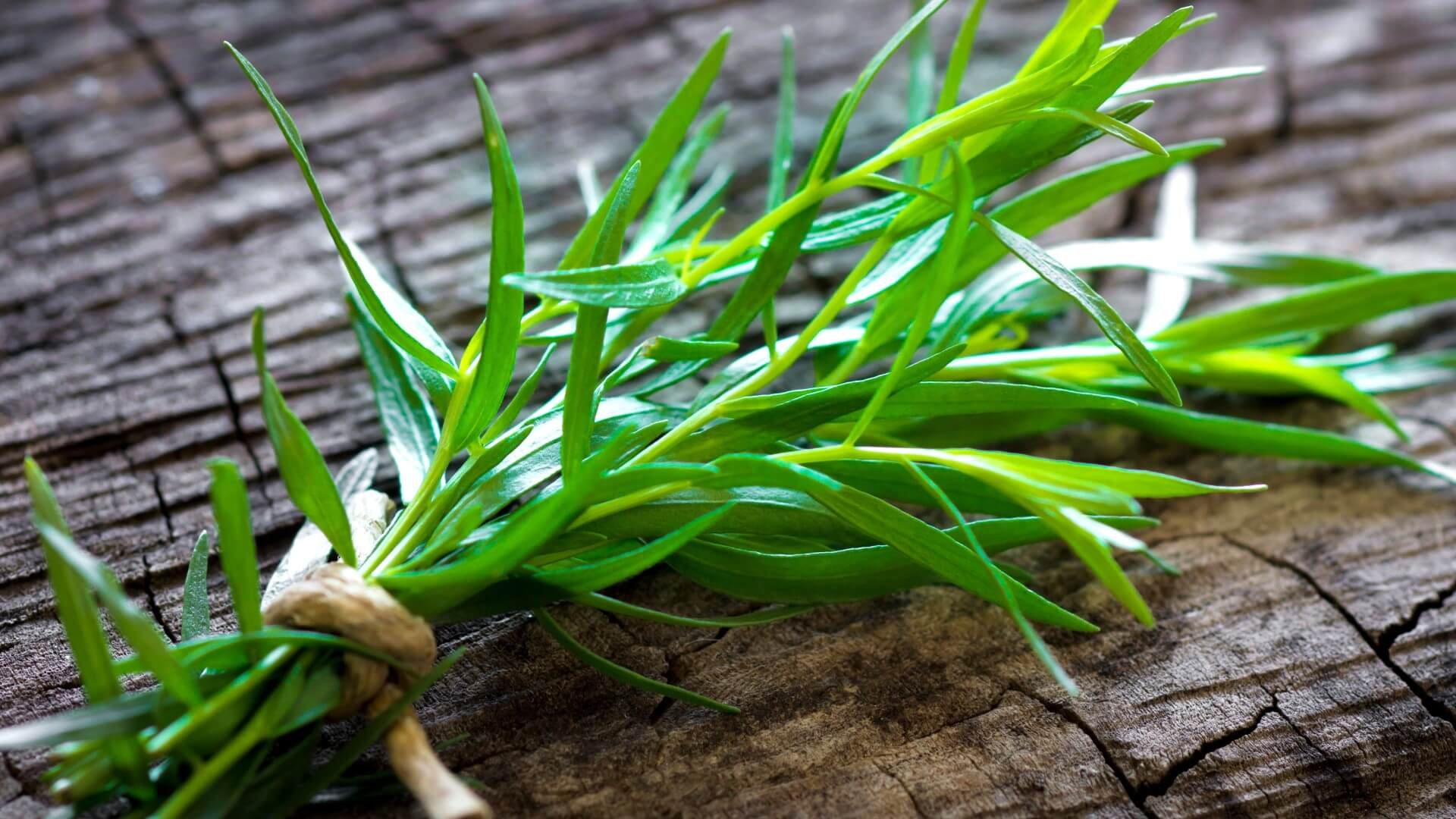Guide to Using Herbs & Spices on Fruits & Veggies
Hey there, food lovers! Whether you’re a gourmet chef or can barely boil water, you know that the best way to eat healthier or lose weight is by cooking most of your meals.
You also know that you should be eating more fruits and vegetables.
What is the easiest way to bump up the flavor of produce so that you actually get your daily servings without adding a bunch of salt or fat? Herbs and spices!
Are you intimidated by which to add to what? I’ve got you! Here I’ll cover some of my favorite herbs and spices and which fruits and veggies they pair well with.
And before you ask, you don’t need fresh herbs! Any time I buy fresh I end up using a mere fraction of it, so far more often than not I just keep lots of dried options on hand.
Side note, if you’re perpetually forgetting what’s in your spice cabinet because it’s a jumbled mess, try making this DIY magnetic spice rack – it’s so cute that you’ll want to cook more often!!
Anyway, cooking with herbs and spices helps with weight management.
This can add flavor and depth to dishes without adding calories, fat, or sodium.
Replacing heavy sauces or dressings with a sprinkle of herbs can reduce the calorie content of a meal while still making it flavorful and satisfying. Many herbs and spices have been shown to have specific weight loss benefits. For example, research suggests that cumin may help reduce body fat and improve insulin sensitivity, while ginger has been shown to increase metabolism and reduce inflammation in the body.
And as an added bonus: you will boost the nutritional value of your meals and support your overall health.
Not only are you avoiding extra ingredients that are bad for you, but you’re adding antioxidants and other good stuff! Herbs such as oregano and rosemary contain compounds that have been shown to have anti-inflammatory and antioxidant properties, which can help support weight loss efforts.
So, whether you're a seasoned chef or a novice cook, it's time to spice up your culinary creations and reap the amazing health benefits of these powerful ingredients!
Magic Pairings - Table of Contents:
Basil | Rosemary | Thyme | Sage | Turmeric Oregano | Chives | Ground Mustard | Cumin Paprika | Dill | Ginger | Chervil | Tarragon
Basil. Bright and aromatic.
Tomatoes: you already know this one.
Berries: Strawberry and basil sorbet or blueberry & basil compote.
Peaches: Peach and basil salsa or grilled peaches with basil and honey.
Melon: Basil can be used to add a fresh, herbal note to melon dishes, such as watermelon and basil salad or cantaloupe and basil smoothie.
Eggplant: Eggplant parmesan or grilled with basil and balsamic vinegar.
Zucchini: Zucchini and basil frittata or grilled zucchini with basil and lemon.
Rosemary. Piney, woody flavor that complements sweetness and earthiness.
Tomatoes: Tomato sauce or tomato soup.
Carrots: Roasted carrots or carrot soup.
Squash: Roasted acorn squash or butternut squash soup.
Apples: Rosemary apple pie or apple cake with rosemary.
Grapes: Roasted grapes or grape and rosemary focaccia.
Thyme. Slightly minty, earthy flavor.
1. Mushrooms: A classic pairing in French cuisine, they are often used together in dishes such as mushroom soup or sautéed mushrooms.
2. Tomatoes: Tomato sauce or roasted tomatoes.
3. Carrots: Roasted carrots or carrot soup.
4. Berries: Thyme infused grapefruit strawberry sorbet or blueberry and thyme compote.
5. Lemon: Lemon and thyme roasted chicken or lemon thyme vinaigrette.
Sage. Slightly bitter, earthy flavor.
1. Squash: Butternut squash soup or roasted acorn squash.
2. Apples: Apple and sage stuffing or apple and sage pork chops.
3. Beans: White bean and sage soup or sage and butter bean hummus.
4. Pears: Pear and sage tart or red pear risotto with gorgonzola.
5. Brussels sprouts: Garlic sage Brussels sprouts or Brussels sprouts and sage gratin.
Turmeric. Exotic earthy flavor with a warm and peppery aroma.
1. Cauliflower: A classic pairing in Indian cuisine, dishes include turmeric roasted cauliflower or cauliflower and turmeric soup.
2. Sweet potatoes: Sweet potato and turmeric curry or roasted sweet potatoes with turmeric and cumin.
3. Carrots: Carrot and turmeric soup or turmeric roasted carrots.
4. Pineapple: Turmeric can be used to add an unexpected flavor to pineapple dishes, such as pineapple and turmeric smoothies or turmeric pineapple popsicles.
5. Mango: Mango and turmeric chutney or turmeric and mango smoothies.
6. Spinach: Turmeric and spinach omelets or turmeric roasted spinach.
Oregano. Slightly bitter, peppery flavor.
1. Tomatoes: If you’ve ever had pizza, you know this one.
2. Eggplant: Eggplant parmesan or grilled eggplant with oregano and lemon.
3. Zucchini: Zucchini and oregano fritters, zucchini and oregano soup, or sauteed zucchini with oregano and feta.
4. Bell peppers: Sauteed peppers with vinegar and oregano or oregano and bell pepper frittata.
5. Lemon: Lemon and oregano chicken or lemon and oregano dressing.
Chives. Mild onion-like flavor.
1. Tomatoes: Tomato soup, tomato salad, or bruschetta.
2. Asparagus: Roasted asparagus with chives or asparagus and chive quiche.
3. Radishes: Radish and chive salad or radish and chive butter.
4. Carrots: Roasted carrots with chives or carrot and chive soup.
Ground mustard. Bold, tangy flavor.
1. Broccoli: Roasted broccoli or a broccoli and cheese casserole.
2. Cauliflower: Roasted cauliflower, cauliflower soup, or cauliflower gratin.
3. Brussels sprouts: Roasted Brussels sprouts with ground mustard, or Brussels sprouts and bacon hash.
4. Carrots: Roasted carrots with ground mustard, or carrot and ginger soup.
5. Cabbage: Coleslaw (vinegar-based) or sautéed cabbage and onions.
6. Apples: Apple and cheddar cheese salad, or apple and mustard-glazed pork chops.
7. Pears: Pear and blue cheese salad or pear and mustard-glazed ham.
Cumin. Warm, earthy flavor.
1. Sweet potatoes: Cumin roasted sweet potatoes, mashed, or in a curry.
2. Beets: Beet and cumin fritters.
3. Cauliflower: Roasted cauliflower or cauliflower and chickpea curry.
4. Tomatoes: Tomato-based dishes, such as salsa or tomato soup.
5. Spinach: Sautéed spinach or spinach and chickpea stew.
6. Eggplant: Eggplant and chickpea curry or roasted eggplant dip.
7. Bell peppers: Stuffed bell peppers or roasted bell peppers with cumin and paprika.
Paprika. Sweet, smoky flavor. (It’s made from ground peppers!)
1. Bell peppers: Stir-fry or in a stuffed pepper dish.
2. Tomatoes: Tomato soup or a tomato and egg skillet.
3. Squash: Roasted butternut squash or a squash soup.
4. Cauliflower: Roasted or grilled cauliflower dishes.
5. Corn: Charred paprika turmeric corn cobs or corn chowder.
6. Eggplant: Grilled eggplant slices.
Dill. Fresh and aromatic.
1. Cucumbers: Dill and cucumbers are a classic combination, often seen in dishes like cucumber salad or tzatziki sauce.
2. Tomatoes: Tomato soup or tomato and cucumber salad.
3. Carrots: Roasted carrots or carrot salad.
4. Beets: Pickled beets.
5. Radishes: Radish and cucumber salad or dill roasted radishes.
6. Asparagus: Roasted or lemon dill asparagus saute.
Ginger. Pungent and spicy.
1. Sweet potatoes: Roasted, mashed, or in a curry.
2. Apples: Apple pie or apple ginger jam.
3. Mangoes: Mango salsa or mango smoothies.
4. Broccoli: Stir-fries or roasted broccoli.
5. Squash: Soups or roasted dishes.
6. Berries: Triple berry ginger scones or berry ginger smoothie bowl.
Chervil. Subtle, anise-like flavor.
1. Beets: Roasted, pickled or boiled. Or beets with yogurt and chervil.
2. Asparagus: Roasted or grilled asparagus.
3. Peas: Risotto, soup, or salad. Or sea scallops with peas and chervil.
4. Citrus fruits: Particularly orange or grapefruit, adding a fresh, herbaceous note to salads like a carrot, orange, and chervil salad.
5. Strawberries: Strawberry desserts or salads.
Tarragon. Also an anise-like flavor.
1. Mushrooms: Tarragon's distinctive flavor can add depth to mushroom-based dishes, such as soups, stews or sautéed mushrooms.
2. Peas: Soups, stews, and risottos.
3. Apples: Pies, tarts, or cakes.
4. Pears: Pear desserts or salads.
From reducing inflammation and improving digestion to promoting heart health and boosting immunity, herbs and spices are a simple and easy way to incorporate natural health benefits into your daily meals.
See? Cooking with herbs and spices not only adds delicious flavor and depth to your dishes, but also provides numerous health benefits.
Did I miss one of your favorite combos? Let me know in the comments!
Whether you're looking to add a little kick to your vegetable dishes, or to create a fragrant and flavorful marinade for your meats, there is an herb or spice out there to fit your taste and preferences. By experimenting with different combinations, you can create unique and delicious new combinations that are easy to whip up!
Your waistline (and blood pressure) will thank you!
If you’re looking for a quick weekend reset with easy, whole food recipes, try my FREE three day liver reset:



